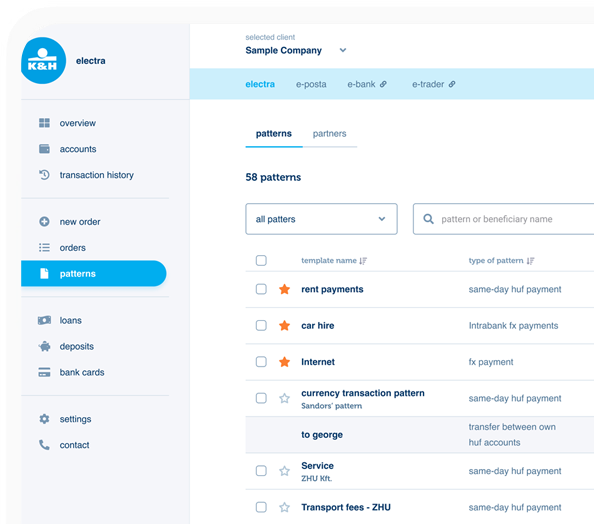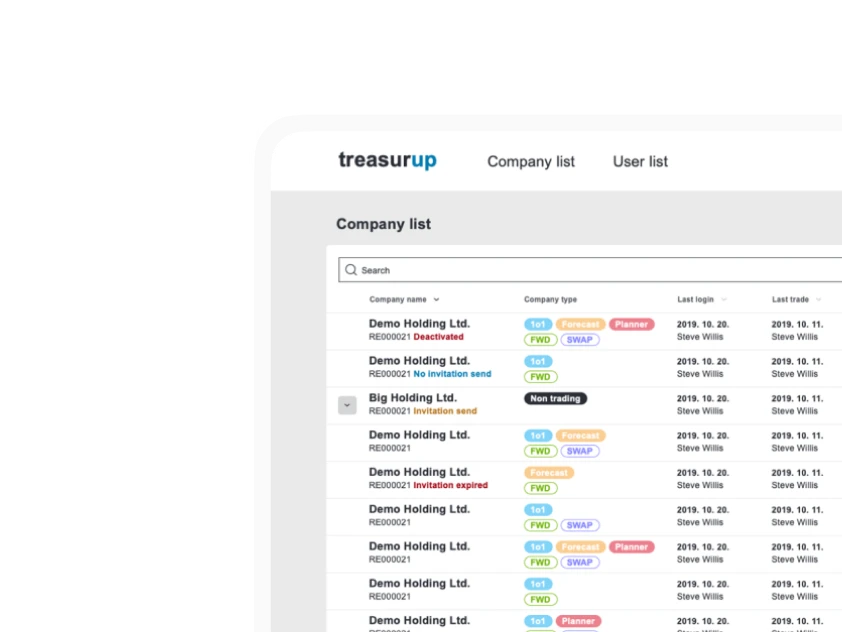Fintech in Türkiye - ‘We are still building the plane while flying it’
Kutay Yalinkilinç is miming surprise at how he reads one regulation, then another, then another. “Oh look,” he says. “And here’s another new regulation!” Kutay is clearly not impressed by the way Fintech is being dealt with in Türkiye. He describes how there are many Fintechs in the country, both unlicensed and licensed, with over 200 types of licences in play for various financial institutions, traditional banks, consumer financing companies, e-money companies, payment service providers, crypto asset companies and insurance companies. That’s a lot of licences. Add to this the fact that there are four different regulatory bodies at work for contact and compliance. For example the Turkish Central Bank is the regulator for e-money and payment services companies. There’s a different supervision agency for banks and consumer finance companies. Then there’s the new regulation for crypto assets, which also covers all financial institutions for KYC, AML and customer onboarding. It’s understandable why Kutay looks at the forest of regulation and declares that he is not so optimistic at present. “I’m not an optimist,” he adds, “But a futurist!”
 Kutay Yalinkilinç, co-founder PARS VC
Kutay Yalinkilinç, co-founder PARS VCRegulation was outdated
Kutay is a well-known Fintech entrepreneur on the Turkish scene and beyond, with a twenty year background in banking and Fintech, and since late 2024 has headed up Pars Venture, a VC organization aiming, ‘To empower visionary entrepreneurs by providing the strategic force, expert guidance, and the collaborative environment needed to transform groundbreaking ideas into successful, market-leading companies.’ While looking to encourage visionary startups, Kutay is somewhat frustrated by a financial environment which tends to limit innovation, and where he says, “There are just the same products and services.” The core banking regulations were published over thirty years ago, and apply to twenty-three traditional banks. New and incoming regulations are more tailored to Interface Banking, as Kutay describes app-based and mobile banking-as-a-service. Change is happening, whatever the regulators say, and he mentions Getir, the grocery and delivery company founded in 2015 that expanded into financial offerings, and has over 20 million active users. In comparison, the biggest bank in the country is İşbank (Türkiye İş Bankası) with around 50 million customers, and therefore Kutay says, Getir is heading towards being the second largest bank-like organization in terms of customers in the market. What started as a grocery service is now a major financial player.

Good in parts
Continuing on the theme of a rather static situation, Naz Alize Naak, co-founder and Chief Product Officer of Money Industries says, “In Türkiye, we have a lot of digital wallets but they all have the same features. You download the wallet, open an account, load money, transfer between wallets, make a payment, and that's it - all the same thing. What’s the difference? Nothing!” Alize realized that she wanted to make some deep changes, but before we go there, let’s take a few steps back, to 2018 and Alize starting her career. She was working with the product and operations team at United Payment, one of Türkiye’s largest electronic money and payments systems companies (also active in Azerbaijan, Romania and Georgia). Here she gained valuable experience with both local and global partners, developing business solutions across various verticals from prepaid cards to bill payments, and - crucially for what was to follow - cross-border money transfers.
 Naz Alize Naak, co-founder and Chief Product Officer, Money Industries
Naz Alize Naak, co-founder and Chief Product Officer, Money IndustriesA lack of differentiation
Following this Alize transferred to PayTR, the Virtual POS and Payment Solutions service, ‘enabling website owners to receive secure online payments from their websites in the fastest and easiest way.’ At the time companies were struggling to meet incoming regulations for Electronic Money Institutions and payments companies, which meant that already-existing products were being adapted to meet the new rules. The overall result was a general stagnation in product development, which led to the ‘same old same old’ look and feel of many Turkish wallets, as the whole sector started to fall behind in terms of innovative solutions. Like many entrepreneurs before her, Alize examined the situation and saw that there could be newer and better ways of both meeting the regulations and offering better products. In this she was joined in her brainstorming by Kutay Yalinkilinc. During that time they had handled cross-border payments on behalf of TransferWise (now Wise) for Türkiye operations which added to their experience in co-founding Money Industries, offering ‘Pioneering Cross-Border Fintech Solutions for a Globalized World. For financial institutions, we offer a cross border payment and money transfer solution from / to new countries without needed incorporation.’
 Money Industries
Money IndustriesFinding a better place to incorporate
Note that the Turkish founders have not, however incorporated in Türkiye. Money Industries is Estonia-registered because of Turkish licensing and regulatory issues being so complex, and also due to the fees involved. “When you establish a startup in Türkiye, and your startup finally gets an investment, company partnerships and tax procedures are quite long and exhausting.” So Estonia it was, which proved to be a good call. In Türkiye the process of registration would have been very slow, but in Estonia from start to up-and-running took only one month. Money Industries was established in 2023, with the first investment coming from the Azerbaijan group, Caucasus Ventures and Turkish group, Pars VC.
While Alize’s career was just getting off the ground in 2018, Gülçin Aytemizel Telatar has been active in financial technology and financial services in Türkiye for over two decades. In 2024 she became the CEO of newly established Fintech, Starpay and is set to make sweeping changes in the market with a new green offering - which at the time of our conversation is in the process of gaining an Electronic Money Institution license.
A career built on vision and execution
To understand the depth of experience that Gülçin brings to her latest role, let’s step back to where she started with the BBVA Garanti payments system, following six years with Hewlett Packard. BBVA was, says Gülçin, her ‘training school’ where she was able to work in every corner of the business. “Payment systems taught me all the details of issuing, acquiring, sales, marketing, and portfolio activities. However, I felt that I should be in a larger part of an organization to really see the digital banking and retail banking environment.” At which point she got a job offer from ING Bank Türkiye. It was a big opportunity because now she changed hats and responsibilities, and in 2014 headed up alternative delivery channels to make strategic partnerships. “It was an additional channel, instead of brands, mobile banking, and so on. So from scratch, I set up a dedicated team. I was only one person when I started the job, but in nine years my team expanded to seventy people.”
 Gülçin Aytemizel Telatar, CEO Starpay
Gülçin Aytemizel Telatar, CEO StarpayThe BNPL revolution and Fintech partnerships
During this time Gülçin created some unique and niche partnership deals, and developed Türkiye’s first Buy Now Pay Later scheme, partly as a result of regulatory changes in the area of credit card use. She points out that then, as now, Turkish people tend to be heavily credit card oriented, and love to make their purchases in installments. Furniture, cell phones, white goods - the first question back in the day tended to be, ‘Hey, can I pay in installments?’ Typical terms might be sixty months of repayments.
On joining ING, Gülçin’s mission was to create and develop an alternative payment plan, following new regulations which put revised conditions and caps on credit card usage, affecting all the parameters and behaviours of market dynamics. The search was on for alternative models, with ING partnering one of the biggest grocery chains in Türkiye to create an instant lending model - which Gülçin got up and running after only twenty days. The aim was to offer customers instant lending within ten minutes, so the offering was unique.
Traction was initially slow, with interest rates and other lending dynamics making uptake a little difficult, and Gülçin comments that “We really had to raise our risk appetite.” But then one corporate customer became two, then five, as furniture and white goods companies - and notably one of the biggest electronics stores in Türkiye - joined the new way of engaging with their customers. It was a time of innovation and rapid growth, not least in the ING team which was soon to include sales, marketing, risk management and fraud operations: “It was kind of a small bank within a bank,” numbering around fifty corporate customers in their portfolio. Meanwhile other local competitors were catching on to the new normal and - especially in electronics and groceries - business was booming. During this period the newly-acquired customer base for ING Bank also catapulted from 4% to 70%, clearly demonstrating the public appetite for a break from traditional banking models.
Change was in the air and the bank began to reduce its extensive network of bricks-and-mortar branches and head towards ever more digital banking practices and alternative delivery channels. It was a process happening across Europe of course, but in the relatively conservative Turkish banking market, the changes in retail banking projects and offerings such as BNPL products were especially notable.
All was going extremely well for Gülçin as her portfolio continued to expand with new partnerships, agreements and models. In her last two years with the bank, she started to rub up against more and more of the new Fintech companies which were appearing on the scene. “They were knocking on my door, saying Hey, Gülçin, we have a project. We have a model, and we would like to work with you. Can you listen to us? And I said, of course, yes.”
Who uses what
This can-do attitude is shared by all three participants in this discussion, but what about the big picture of banking and mobile in Türkiye, and the question of who uses what? The use of apps for banking and mobile applications is high among the Turkish population of some 85 million, with a usage rate of 91%.
Kutay Yalinkilinç reckons there are 90 million active bank accounts, and 100 million credit cards in use, along with 200 million debit cards, accessing 60,000 ATMs. Turkish citizens average two active accounts, and while the population trend is aging, the median of thirty-four is ten years younger than across most of Europe. So, that seems a fairly healthy environment for a revolution in banking and Fintech, does it not? With the new regulations first published in 2022, banks started to open accounts with remote Know Your Customer in mobile applications, and by the following year 10 million consumers had opened accounts via remote KYC - or at least they had tried to - but the success rate was only around 50%. Why? Because according to Kutay the Turkish population mainly uses Android phones, some of which, ‘Have very bad cameras and microphones’ making the remote onboarding process often unsuccessful, especially from outside main population areas. With over 80 million Turkish people using smartphones, and over 85% of those being Android, you can see why the KYC process not always working smoothly could be something of a problem. And this isn’t just anecdotal - Kutay speaks from experience. “I started a video call to a bank to set up an account, using remote KYC. ‘We can’t see your ID card, we can’t see you,’ they said.” Not an optimal situation then. And although the Turkish demographic is younger than across Europe, he says that it is also very traditional, so initiatives such as remote KYC are not taken up as quickly as they might be in other markets.
The regulatory forest
Looking at segmentation, and what’s been offered through those not-quite perfect Android phones, Kutay mentions that there are around twenty licensed e-money and payment service providers currently in Türkiye. They operate in a large ecosystem with a yearly volume of some 10 billion USD. However in terms of acquiring current payments there is only a 6% market share, rising to a 20% share in the payments arena. Room for growth then, but that takes Kutay back to the forest of regulations. He points to the crypto asset rules which are coming in to deal with the Turkish volume of crypto assets standing at around 820 billion USD. The Turkish Lira is - perhaps surprisingly - the world’s fourth most utilised fiat currency for crypto, so it’s understandable that new legislation dating from July 2024 is needed to clarify how the markets work. The Crypto-Asset Services Providers (CASP) regulation has introduced compliance and transaction rules for crypto asset providers, with a 2% levy on their trading income. So tighter control, higher costs. The three big crypto asset companies are BtC Turk, established 2013, Paribu, and the global giant Binance, created in 2017 and boasting 250 million users worldwide, and ever-rising. Together these big three account for around 10 million Turkish customers, and easily met the new regulations. Meanwhile 150 companies applied to become CASP certified, of which to date (at the end of 2024) 80 have passed the test, 50 have failed, and some 30 are still being processed. “It’s a big game changer,” Kutay observes of this swirl of regulation and the new players attempting to enter the financial ecosystems.
Joined-up action
So how strong and supportive are Fintech associations in Türkiye, at a time when some commentators are predicting the country’s ‘breakout moment’ for the industry? Again, Kutay points towards a fragmented system which makes joined-up action difficult. “For example, if you are an e-money company and you have a digital wallet, customers can make payments and transfers. Okay, but say I now want to give my consumer buy now, pay later services. But if you are a money company, and you want to do BNPL, you must establish another company. Then you must apply to the banking regulation and supervising agency for a consumer finance licence. So where is the innovation? Where is the business development? Where is the collaboration? If I establish a new company, I must apply for the licenses from two different regulatory bodies, with two compliance processes, two sets of regulations… And the customer has to do KYC for their digital wallet, while for consumer finance the onboarding is different. The Turkish ecosystem is…” Kutay makes a gesture which implies craziness. He stops short of saying the word, but it’s clear that his feelings about the regulations, and the lack of a cohesive industry push-back against them is far from satisfactory.
Cross-border frustrations
So, Money Industries had its first backer and was registered in Estonia, but what is its mission? Alize explains that it’s a platform that enables local Fintech companies and financial institutions to globalize their products and companies. The snag is that - as we have seen - each country has new regulations, new capital requirements, and different demands. It’s also necessary to have some understanding of the market that a Fintech is intending to enter - knowledge which isn’t always easy to access. The result is that processes take far too long to achieve anything, and it often becomes easier for financial institutions to merely stick with their local solution. It’s limiting and frustrating, but what can anyone do? Well, one answer is to use Money Industries as a bridge between countries and systems, ‘Enabling fast money transfer and payment relationships with a single integration between the countries where our partner network is located.’ So all of Alize and Kutay’s experience gained with their previous companies comes good with the new venture. Alize explains, “We have partners in different countries, and they can make a money transfer or cross-border payments in Money Industries’ ecosystem. With Money Industries we support many channels, like physical locations, bank accounts, bank cards, credit cards, digital wallets, and also local payment solutions. For example, in Türkiye, we mostly use our bank accounts for money transfers, and we mostly use our credit cards for payments. But when you look at Azerbaijan for instance, people mostly use their credit cards for money transfer. So because of this, it was very important for us to establish a structure that supports all of these channels.”
User interface lite
With so many different users across borders and languages, presumably the UX for Money Industries must be complex, but Alize says not at all. Take a look at the hyper stripped down website to see ‘less is more’ in action. “We give them a structure and API documents and our platform, and they integrate our applications and their websites. We don't have any user interface as such, and we will not have - we just give them our APIs and they integrate.” Most communication is in English, although Azerbaijan has been an important jumping-off point because Turkish is spoken there. The Money Industries team is currently six strong and Alize says she can’t see it needing to grow a great deal even as the business grows, because of the nature of the product.
Phase One of the company is rolling out to the Africa region, (including Nigeria, Tanzania, South Africa, and Uganda); Azerbaijan, and Uzbekistan and the proof of concept is working, with money transfers and payments functioning, but further ongoing testing needed. After which Phase Two will see the partnering with other companies across wider territories, looking particularly at ‘high money transfer corridors’ of which Azerbaijan and Uzbekistan are good examples, along with Latin America and Asia Pacific countries. If there’s a Fintech or financial institution that needs to make cross-border payments and money transfers, then Money Industries can help.
Enter the Fintechs
In the closing two years with BNPL Gülçin Aytemizel Telatar says she was happy to look at potential Fintech partners, and indeed recommend some to her board, but admits that there was still that old mindset prevalent that Fintechs were the competitors to banks, and not natural allies. She was wearying of constantly being asked, ‘But why do we need these Fintechs, why should we work with them?’ The overall atmosphere on the banking side was of suspicion, especially around Know Your Customer issues. For her part however Gülçin was gradually being turned around to seeing how Fintechs could work with banks to expand their value proposition. The banks were constrained by very strict guidelines and rules, with roadmaps which couldn’t be deviated from. That clearly wasn’t the path towards rapid innovation. At the same time, the energy of Fintechs was attractive, but many of them needed help and guidance from people experienced in banking. Then along came that offer that she said ‘Yes’ to: One of the biggest Fintechs in Türkiye, the money transfer company, PayCell, set up by telecoms leader Turkcell with over 40 million customers. New financial products were in the frame, including consumer lending and investment insurance - the career opportunity that Gülçin couldn’t ignore.
 Gülçin speaking at a conference
Gülçin speaking at a conferenceDriving Customer Experience in Fintech
Two and a half years of intensive product development followed in her new position, as she worked to balance the needs of a large Fintech with her more traditionally focussed banking background. She saw that, relative to banking where customer experience was paramount, this was less important in the Fintech world. “CX comes from behind, especially looking at the customer journey: Designing processes from the customer perspective can be so limited because the ambition is to launch the product immediately. Get the product on the shelf as soon as possible, without questioning the customer’s mindset!” In her new company, Paycell, Gülçin worked to change this way of thinking so that Customer Experience was put front and center, using the Service Design model. The whole infrastructure was changed and in rapid order eight new products were launched… but only once they had been thoroughly tested and proven! The Service Design approach ensured that the customer perspective ran through everything that PayCell was offering, with a strong focus on research. Gülçin comments that this is perhaps the biggest difference between banks and Fintechs, in that the banks are always hugely prepared before launching new products, “If the customer says, I don't like this screen or this color, the banks will revise the whole process. But in the Fintech ecosystem, you are competing with time, you are against your competitors. So you can't do the analysis in the depth that banks do.” The mindset needed to change on both sides of the equation: “All the time I was convincing my board, but I was also convincing my peers.”
Sometimes old tech is ‘new’
And what interests Kutay Yalinkilinc in the way of new technologies that may help with this wave of innovation? Does he see changes in mindset? He points out that ‘new’ can mean different things to different people, and that for Türkiye’s unbanked or underbanked population, even a prepaid card is new technology. Younger and more affluent people are adopting digital wallets, and voice technologies are making some inroads. “AI and voice technologies are all good. Crypto and the blockchain are all good,” but he stresses that they are still in their relative infancy. Meanwhile Near Field Communication is making inroads, but Kutay reckons Turks are behind the general European population in terms of the uptake of new tech. “When we even have to search for wifi,” he says, as if looking round for some missing ingredient, “You can see why a lot of Turkish people still go to the post office to do money transfers, and for bill payment. Cash is still very strong.”
 Kutay (right) and some of the PARS team
Kutay (right) and some of the PARS teamThe growth of Turkish Fintech
Alize’s take on developments is that Fintech is definitely growing, largely because there are large gaps in the market, providing both investors and entrepreneurs with opportunities. She points to banking, payment systems and cryptocurrency as being growth areas set to transform whole sectors. “AI-powered financial analysis and cryptocurrencies or stable coin payments, is increasing.” She adds the caveat that, “But you will not be surprised to learn that we already have cryptocurrency regulation, spread across different regulatory bodies. Actually, we have many regulatory bodies in the Fintech sector. The Turkish Central Bank is one of these, and the Treasury Ministry, and the finance departments dealing with Anti Money Laundering, and so on. We have a lot of regulatory bodies!” So it's still difficult to cut through all this regulatory forest.
Alize sees the way forward for Fintechs as developing better partnership and collaboration models, especially with the banks where a stronger ecosystem could be created by working together. This will enable integration of related technologies and lead to the creation of faster and more innovative solutions.
“For example, Money Industries is not a licensed company. It offers just a software system and partnership relations, but the companies which are our partners are licensed in their own countries - where they are regulated - and thanks to these collaborations, we are able to move faster and more quickly in those countries. In the past, banks in Türkiye didn't want to collaborate with startups, but now that mindset is really changing. In fact, big corporations, including banks, have started to create their own startups or set up investment studios, and this opens further opportunities for collaboration.”
 Star Pay
Star PayAdvocating for women in Fintech and technology
This means there is a great need for streamlining processes and Gülçin says, “You know, every day I wake up and go, Hey, is there any progress today?” She compares her time working in banking, where regulations were already strict, but comments that for Fintech they are ‘double strict.’ However she remains upbeat, especially about ‘embedded finance’ opportunities and her dream of creating a financial ecosystem through depository mobile applications. And what of Gülçin’s personal plans, and how far she’s come over the years? Without false modesty she mentions that she is at the forefront of female Fintech leadership in Türkiye, which brings with it certain commitments to increase awareness of women’s opportunities in the sector. She is actively working with associations and different communities to increase the perception of women in Fintech and banking, and to promote better initiatives. “In the last two decades women were shadow people. We were putting together the presentation, giving it to our male boss, and he’d then give the presentation.” That’s changing, along with the perception that ‘women don’t do tech’. Gülçin laughs, “I understand technology! I graduated from Computer Engineering and spent my first nine months as a programmer. And now I have missions outside my professional life to spend extra time encouraging women working in technology.” She mentions the need for more Science, Technology, Engineering and Mathematics (STEM) programs targeted specifically at girls and young women, and this increasing engagement with gender equality issues ties in with the sustainability front as Starpay gets going on its ecological mission. “I’m making my own commitment to these issues,” Gülçin says, “I’m raising my hand.”
 Gülçin (centre) with some of the Starpay team
Gülçin (centre) with some of the Starpay teamLooking to the future
The scorecard for Türkiye looks good in parts. That keyword, ‘collaboration’ is getting traction, and the long-held suspicion of banks about Fintech is slowly being eroded as both sides accept that they need each other’s expertise. Innovation is in the air, and startups such as Money Industries are looking beyond their borders to create new opportunities. At the same time what seems like a creaky and overly-bureaucratic system of regulation tends to operate as a brake on innovation. Nevertheless, Naz Alize Naak is optimistic for her sector, and for her own company, “Our business model is really good, and cross-border products and payments offer great potential in Fintech markets. And when I talk with investors and partners, they always say, ‘Wow, that's a cool solution!’ So I’m optimistic that we will be successful.”
Kutay Yalinkilinç points to the Money Industries strapline: One integration, many countries. It’s a company founded by Turks, but which is registered in Estonia because of the licensing complexities in Türkiye. Many industries need a gateway, for the CIS from Türkiye, for MENA (Middle East and North Africa).
So, we return to the subject of the future of Turkish Fintech, and Kutay’s futurist views. Would he say that better times are ahead, but not quite yet? “Yes. Turkish Fintech companies have global designs. Türkiye can be a bridge between Asia and Europe, between East and West. This can be a very big opportunity for us.”
Gülçin Aytemizel Telatar’s take is that it’s all a work in progress. The regulatory system is awkward and needs to be streamlined so that action and innovation can be encouraged. Banks and Fintechs are becoming less suspicious of each other, but there is still ground to be made up. She says that customer-centric design has yet to really make an impact within the Fintech ecosystem, which still has much to learn from the banking approach. Banking in turn can learn from the speed of innovation that Fintechs push. Ecosystems are developing, but relatively slowly, and collaborations across sectors have to get easier and better. Turks really enjoy speed, Gülçin points out, but right now there are both headwinds and tailwinds in Turkish Fintech, and she adds, “We are still building the plane while flying it.”









